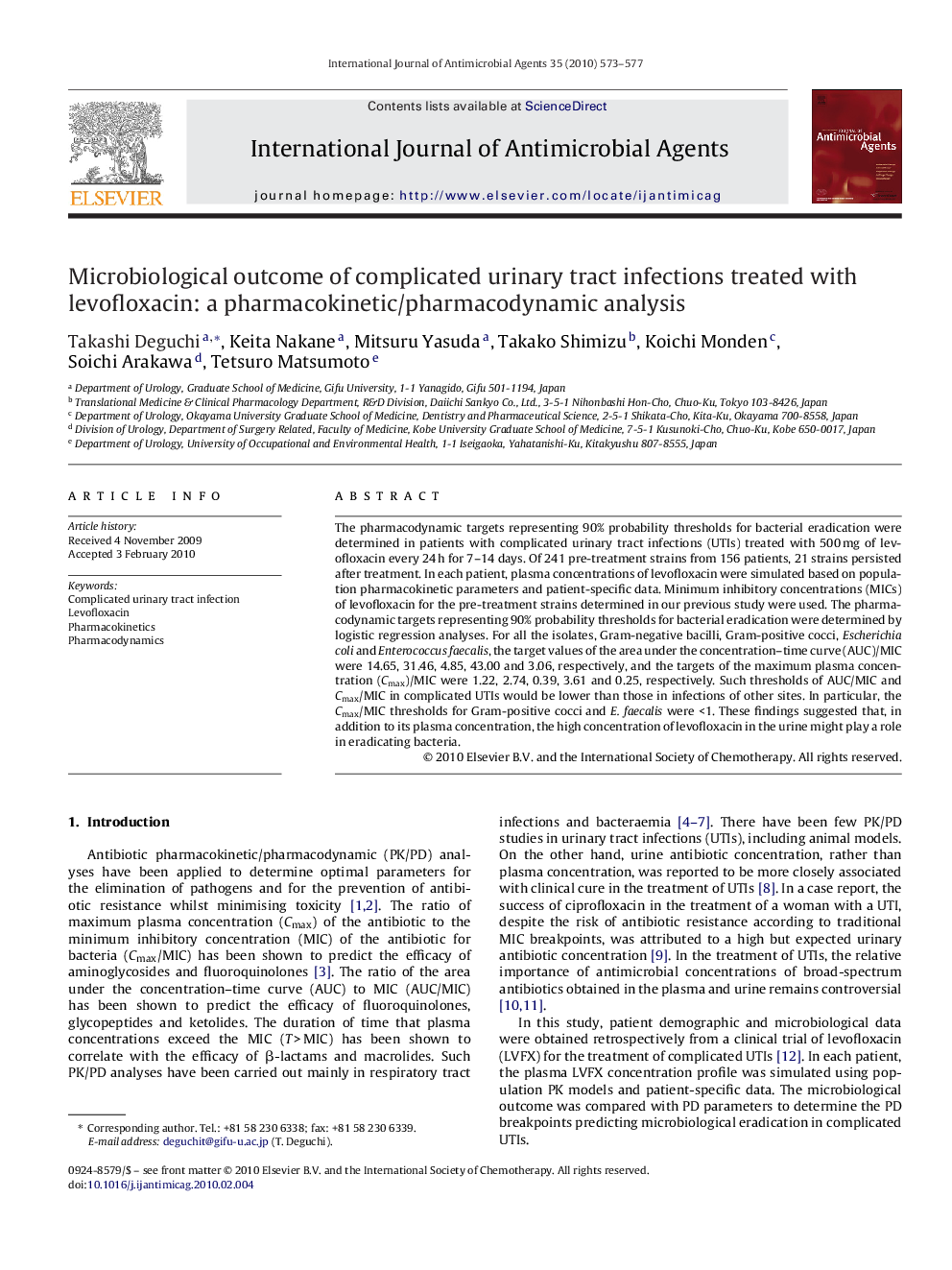| Article ID | Journal | Published Year | Pages | File Type |
|---|---|---|---|---|
| 6118447 | International Journal of Antimicrobial Agents | 2010 | 5 Pages |
Abstract
The pharmacodynamic targets representing 90% probability thresholds for bacterial eradication were determined in patients with complicated urinary tract infections (UTIs) treated with 500Â mg of levofloxacin every 24Â h for 7-14 days. Of 241 pre-treatment strains from 156 patients, 21 strains persisted after treatment. In each patient, plasma concentrations of levofloxacin were simulated based on population pharmacokinetic parameters and patient-specific data. Minimum inhibitory concentrations (MICs) of levofloxacin for the pre-treatment strains determined in our previous study were used. The pharmacodynamic targets representing 90% probability thresholds for bacterial eradication were determined by logistic regression analyses. For all the isolates, Gram-negative bacilli, Gram-positive cocci, Escherichia coli and Enterococcus faecalis, the target values of the area under the concentration-time curve (AUC)/MIC were 14.65, 31.46, 4.85, 43.00 and 3.06, respectively, and the targets of the maximum plasma concentration (Cmax)/MIC were 1.22, 2.74, 0.39, 3.61 and 0.25, respectively. Such thresholds of AUC/MIC and Cmax/MIC in complicated UTIs would be lower than those in infections of other sites. In particular, the Cmax/MIC thresholds for Gram-positive cocci and E. faecalis were <1. These findings suggested that, in addition to its plasma concentration, the high concentration of levofloxacin in the urine might play a role in eradicating bacteria.
Related Topics
Life Sciences
Immunology and Microbiology
Applied Microbiology and Biotechnology
Authors
Takashi Deguchi, Keita Nakane, Mitsuru Yasuda, Takako Shimizu, Koichi Monden, Soichi Arakawa, Tetsuro Matsumoto,
